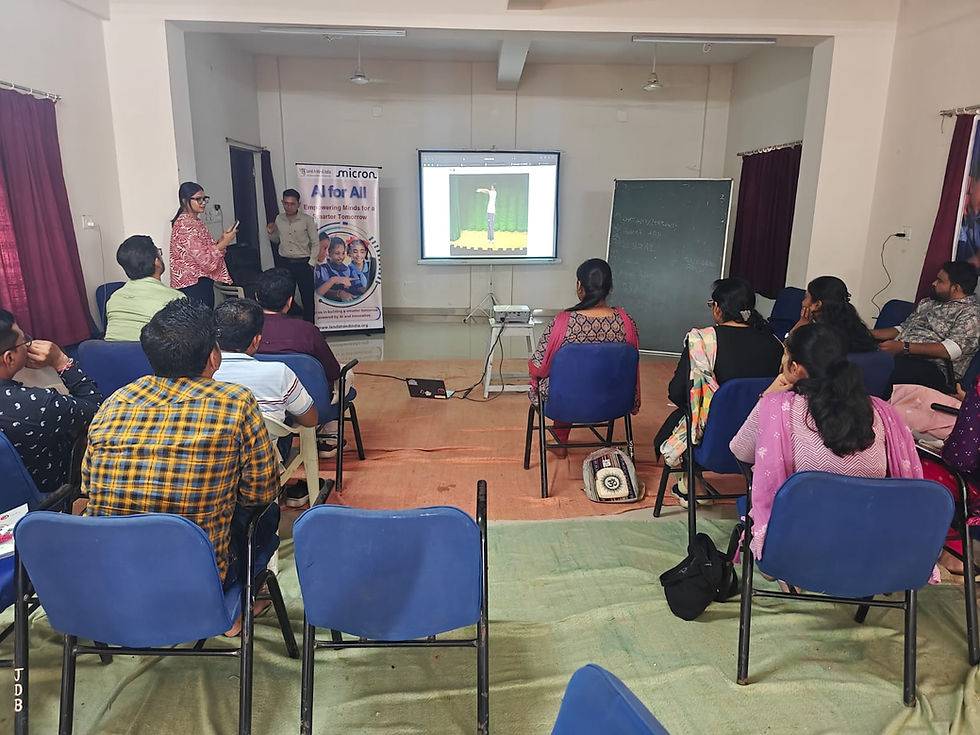Beyond Borders: Taking Yakshagana-Scratch to Classrooms
- Priyanka K Mohan & Shruti Fauzdar
- Sep 26
- 2 min read
After our first pilot in Karnataka, we were curious, could Yakshagana and Scratch travel beyond their familiar home ground?
Could this fusion of art and coding spark curiosity even among those with no exposure to Yakshagana?
The next step of our journey took us to Ahmedabad and Hyderabad, where we worked with both teachers and students to explore how this curriculum could live inside classrooms.
Teachers’ Experience
For many teachers, this was their first brush with both Scratch and Art. While enthusiasm was high , “They loved it, wanted to learn more, and were already imagining how such projects could be used to teach their students” the process was not easy.
Simple actions like dragging and dropping blocks were initially a challenge. The unfamiliarity with Yakshagana also added a layer of complexity. Yet, their eagerness to continue experimenting showed us that teachers are open to reimagining classrooms when given the right support.
Many even expressed a desire to try building similar projects using art forms from their own states, so students could see their culture represented on the digital stage.

Students’ Experience
For students, the experience was filled with discovery and play. Some groups found it easy to pick up, quickly building projects and even adding new characters or narrators. Others struggled, especially at first, but curiosity kept them engaged. What stood out was how both groups those who knew nothing of Yakshagana and those unfamiliar with coding eventually found joy in merging the two. Students not only adapted but also asked for more opportunities to build such projects, and some wondered how their local art traditions could also find a place on Scratch.

Learnings from This Phase
Art makes tech inclusive: Scratch became a playful entry point for learning, even for those who had never coded before.
Storytelling builds bridges: Storyboarding Yakshagana performances encouraged collaboration and made non-dancers relate to the art form.
Teachers need scaffolding: While students adapted quickly, teachers required more time and structured guidance to use Scratch confidently.
Curiosity drives ownership: Students often went beyond instructions, taking pride in customizing their projects and making Yakshagana their own.
Local artforms spark imagination: Both teachers and students wanted to experiment with art traditions from their own regions, opening doors for cultural diversity in the classroom.

Reflections
This phase reinforced that art and technology can travel across geographies, languages, and classrooms. Yakshagana-Scratch is not just about digitizing one art form , it’s about finding new ways to keep traditions alive, relevant, and joyful. For us, the biggest takeaway was that students are ready, teachers are willing, and the classroom can indeed become a space where tradition meets innovation.
As we move forward, the question is no longer if this works, but how much further can we take it? Beyond Yakshagana, beyond Karnataka, and perhaps beyond India,what other stories, traditions, and performances can find their place on the Scratch stage?






Comments